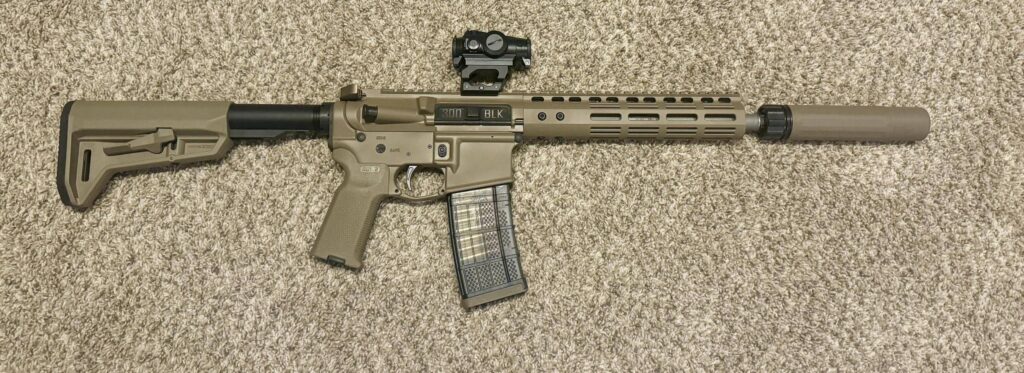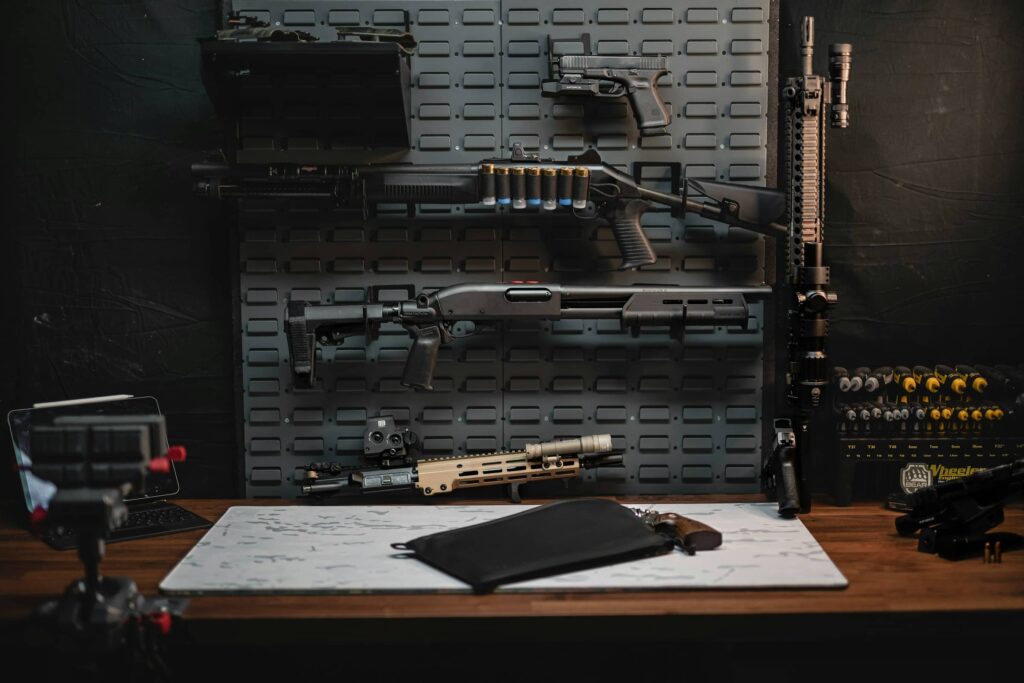Is a law that was enacted in 1934 to combat organized crime still relevant today? The National Firearms Act (NFA), born out of the need to combat the surge in organized crime and the considerable presence of machine guns during the turbulent Prohibition era, remains a cornerstone of American firearms legislation.
By imposing taxes and mandatory registration on certain firearms, the NFA was intended to cut down gun violence. But beyond its historical context, its enduring impact on public safety offers much to debate. In exploring its provisions and modern-day effects, we can easily see the delicate balance between being tough on crime and not infringing on the Second Amendment.
Table of Contents
Historical Context and Purpose of the National Firearms Act
The National Firearms Act (NFA) of 1934 was enacted during a difficult period in American history. Through the 1920s, organized crime was rampant which was exacerbated by the Prohibition era. This was a time when notorious crime figures like Al Capone and their gangs utilized automatic weapons, like the iconic Thompson submachine gun, to commit crimes and evade law enforcement.
The federal government, seeking to curb the proliferation of these dangerous weapons and reduce the violence associated with organized crime, responded with the NFA. This legislation was among the first major federal attempts to regulate firearms by imposing strict controls, including taxation and mandatory registration, to dissuade unlawful use and ownership.
The NFA specifically targeted several categories of firearms that were deemed particularly dangerous and associated with criminal activity *at the time*. These categories included:
- Machine guns
- Short-barreled rifles
- Short-barreled shotguns
- Silencers
- Destructive devices
The primary purpose of the NFA was to regulate these firearms through a system of taxation and registration, effectively creating a legal and financial barrier to ownership. By imposing a substantial tax of $200 — an exorbitant amount at the time — on the manufacture and transfer of these firearms, the Act aimed to deter their proliferation.
Additionally, the mandatory registration of such weapons was intended to keep track of ownership and ensure compliance with the law. Through these measures, the NFA sought to enhance public safety by controlling access to firearms that posed significant risks in the hands of criminals.
Key Provisions and Amendments of the National Firearms Act
The National Firearms Act (NFA) mandates comprehensive registration and taxation requirements for specific categories of firearms. This federal legislation requires all regulated firearms, such as machine guns and silencers, to be registered with the Bureau of Alcohol, Tobacco, Firearms and Explosives (ATF).
A crucial aspect of this regulation is the imposition of a $200 tax on the transfer or manufacture of these firearms. This tax, initially set to deter widespread ownership due to its significant cost relative to the era, remains a key element of the NFA’s framework today.
The registration process is designed to ensure that these weapons are tracked and that ownership is limited to individuals who comply with stringent federal criteria. If someone is caught with NFA restricted firearms, more severe punishment could be brought upon them.
Significant Amendments
Over the years, the NFA has undergone several amendments to refine its scope and effectiveness. The most notable changes occurred with the Gun Control Act of 1968 and the Firearms Owners’ Protection Act of 1986.
Gun Control Act of 1968: This amendment expanded the definitions of firearms under the NFA to include “destructive devices,” thereby broadening the range of weapons subject to regulation. Additionally, it prohibited the importation of firearms that lacked a sporting purpose, further tightening control over firearms entering the United States.
Firearms Owners’ Protection Act of 1986 (FOPA): This amendment introduced significant changes by permitting gun shows and limiting the frequency and scope of government inspections of firearms dealers. It aimed to protect the rights of gun owners while maintaining regulatory oversight.
The NFA continues to play a central role in shaping the landscape of firearm regulation in the United States. Evolving further with societal needs may be a worthwhile compromise to make our streets safer while removing arbitrary and outdated laws designed in a different era.
Impact on Gun Owners and Collectors

The National Firearms Act (NFA) significantly impacts gun owners and collectors by imposing stringent compliance requirements. One of the primary obligations under the NFA is the necessity for background checks and the registration of regulated firearms with the Bureau of Alcohol, Tobacco, Firearms and Explosives (ATF). These measures aim to ensure that only qualified individuals can legally own certain categories of firearms, such as machine guns and silencers. By requiring detailed records and compliance with federal criteria, the NFA introduces a layer of oversight intended to enhance public safety while maintaining the rights of responsible gun owners. Such requirements, while comprehensive, do not face significant opposition from major gun rights organizations, indicating a level of acceptance within the community concerning these regulations.
Gun owners and collectors encounter specific challenges under the NFA, which include:
- High tax burden
- Limited transferability
- Extensive paperwork
- Potential legal penalties
These challenges can influence the accessibility and desirability of certain firearms by creating additional barriers to ownership. The $200 tax, for instance, can be a significant deterrent, especially for collectors or those considering the acquisition of multiple NFA-regulated items.
For example this AR-15 is known as a “2 stamper” by the cool kids. Meaning the owner had to pay $200 for the suppressor tax stamp then another $200 for the Short Barrel Rifle (SBR) tax stamp. Uncle Sam is happy with his $400 in taxes..

Legal Challenges and Modern Implications
Legal challenges have increasingly scrutinized the National Firearms Act (NFA), particularly in its constitutionality concerning Second Amendment rights. Attorneys have argued that federally mandated controls over suppressors infringe upon Second Amendment rights and represent federal overreach. It only takes one case to significantly impact how the NFA is interpreted and enforced, particularly regarding state-level autonomy in firearm regulation.
Implications for Future Regulation
The ongoing legal challenges to the NFA present potential shifts in how firearms regulations might evolve. As courts continue to address these constitutional questions, the balance between federal authority and individual Second Amendment rights remains a central focus. Legal outcomes from future cases could set precedents that either reinforce or challenge the existing regulatory framework, potentially leading to changes in how suppressors and other firearms are governed.
The implications of these challenges extend beyond suppressors. As the legal landscape changes, there could be broader ramifications for the future of firearms regulation, affecting how both federal and state laws interact and potentially reshaping the way the Second Amendment is applied in modern contexts.
One of the main topics of debate in the firearms community is the mental gymnastics needed to regulate suppressors. Since suppressors are not a firearm or destructive device, they should not be required to be serialized, licensed, and registered like a firearm.
The Role of the NFA in Current Gun Control Debates
The National Firearms Act (NFA) plays a pivotal role in ongoing gun control debates, particularly regarding its impact on ATF regulations and the broader gun rights movement. As a cornerstone of federal firearm legislation, the NFA establishes a framework for regulating particularly dangerous firearms, such as machine guns and silencers, through registration and taxation requirements. This framework significantly influences ATF regulations, guiding the enforcement and compliance measures necessary to uphold the law.
The NFA’s effect on gun control discussions is profound, as it portrays the balance between ensuring public safety and respecting Second Amendment rights. By delineating which firearms require additional oversight, the NFA sets a precedent for how firearm regulations could coexist with constitutional rights.
Reasons why the NFA is and is not considered a balanced approach to gun control include:
- Historical precedent: Grounded in the response to Prohibition-era crime. (real world application but from a different era)
- Regulatory framework: Provides clear guidelines for firearm registration and taxation. (but with little to no practical reason)
- Public safety focus: Aims to reduce the misuse of highly dangerous firearms. (an SBR or SBS is no more dangerous than a lever action hunting rifle)
- Second Amendment considerations: Attempts to harmonize regulation with individual rights. (the Second Amendment shouldn’t be pay to play)
In current legislative discussions, the NFA’s role is frequently cited as a benchmark for evaluating new gun control measures. Lawmakers often look to the NFA when debating the introduction of new regulations, considering its historical effectiveness and potential adaptability to contemporary challenges. As debates continue, the NFA remains a key reference point in an attempt to balance safety and constitutional freedoms.
Final Words
Throughout its history, the National Firearms Act has been both a regulatory cornerstone and a point of contention in the gun rights debate. Originating in the 1930s to curb organized crime, this legislation fundamentally reshaped firearm registration and taxation. Amendments over the years, like those in 1968 (GCA) and 1986 (FOPA), have further defined its scope and impact.
For gun owners and collectors, the act’s stringent compliance and registration requirements present ongoing challenges. Yet, despite legal scrutiny and debates on its constitutionality, the NFA continues to influence current gun control discussions. Its role as a regulatory model underscores the delicate balance between ensuring public safety and respecting Second Amendment rights.
FAQ
Q: Why was the National Firearms Act of 1934 passed?
A: The National Firearms Act of 1934 was enacted to curb gun violence associated with organized crime during the Prohibition era, targeting specific firearms with regulations and taxes to enhance public safety.
Q: Is the National Firearms Act of 1934 still in effect?
A: Yes, the National Firearms Act of 1934 is still in effect today, with various amendments enhancing its scope and regulations over the years.
Q: What did the National Firearms Act do?
A: The National Firearms Act imposed taxes and required registration for firearms like machine guns and silencers to control and regulate their distribution and use.
Q: What is the National Firearms Act 2024?
A: As of now, there is no established “National Firearms Act 2024.” Current gun laws continue to evolve, and any new proposals would require legislative approval.
Q: What guns are NFA controlled?
A: The National Firearms Act controls machine guns, short-barreled rifles, short-barreled shotguns, silencers, and destructive devices through strict regulation and taxation.
Q: What year was the NFA banned?
A: The National Firearms Act has never been banned. It remains a foundational law in U.S. firearms regulation, with amendments occurring over the decades.
- The Right Gear for Upland Hunting - December 21, 2024
- How to Get a Suppressor in a Few Steps - December 5, 2024
- What is The Protection of Lawful Commerce in Arms Act? - November 15, 2024




